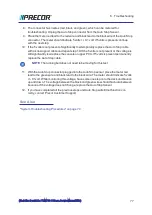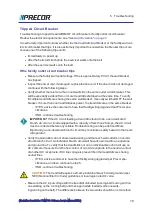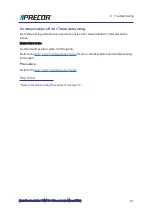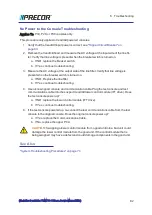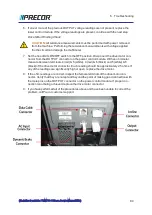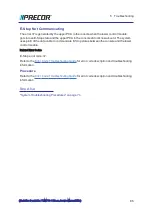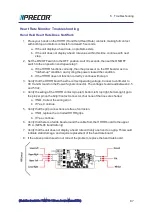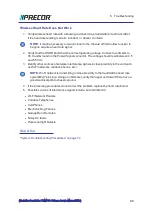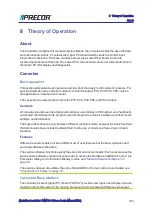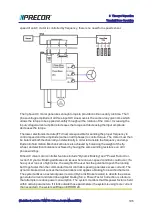
Running Belt and Deck Troubleshooting
This procedure is to be used to determine the condition of the running belt and running deck
combination.
A clamp-on ammeter will be used to measure the treadmill’s AC input current under load. The
AC input current is a direct indication of the load being placed on the treadmill. Treadmill load-
ing consists of several factors, the user’s weight, treadmill speed and condition of the running
belt and running deck.
The AC input current measurements should be performed at 7-8mph. and 0% incline.
Because the loading varies with the user’s weight, you should perform the AC input current
measurement test on a new running belt and deck combination. That will provide you with a
benchmark reading to account for your individual weight.
Because the AC input current reading will pulse between a high value (during foot plant) and a
low reading (between foot plants) we suggest the use of an analog clamp-on ammeter. An
analog ammeter makes it very easy to see the AC current pulses. The refresh rate on digital
ammeters may make it difficult to see the rapid current peaks unless the digital ammeter is
equipped with a peak hold feature.
Procedure
1. Remove the treadmill’s motor cover and place the A.C clamp-on ammeter on the brown
wire from the A.C. input module (or A.C. power cord) to the circuit breaker (ON/OFF
switch). See the illustration below.
2. Set the treadmill’s speed at 7-8 mph and the incline at 0%. Walk on the treadmill and
observe the average A.C. current reading. Typical average A.C. current reading on a
new running belt and deck should average between 8 to 12 amperes. Note that a digital
meter could measure peak amps as high as 20 amps, even on a new belt and deck.
3. If the average current reading approaches 20 amperes, the running belt should be
replaced. The running deck should be flipped or replaced if the running deck has been
(Undefined variable: TRM700-16Base.ServiceManualTitle)
91
6 Troubleshooting

